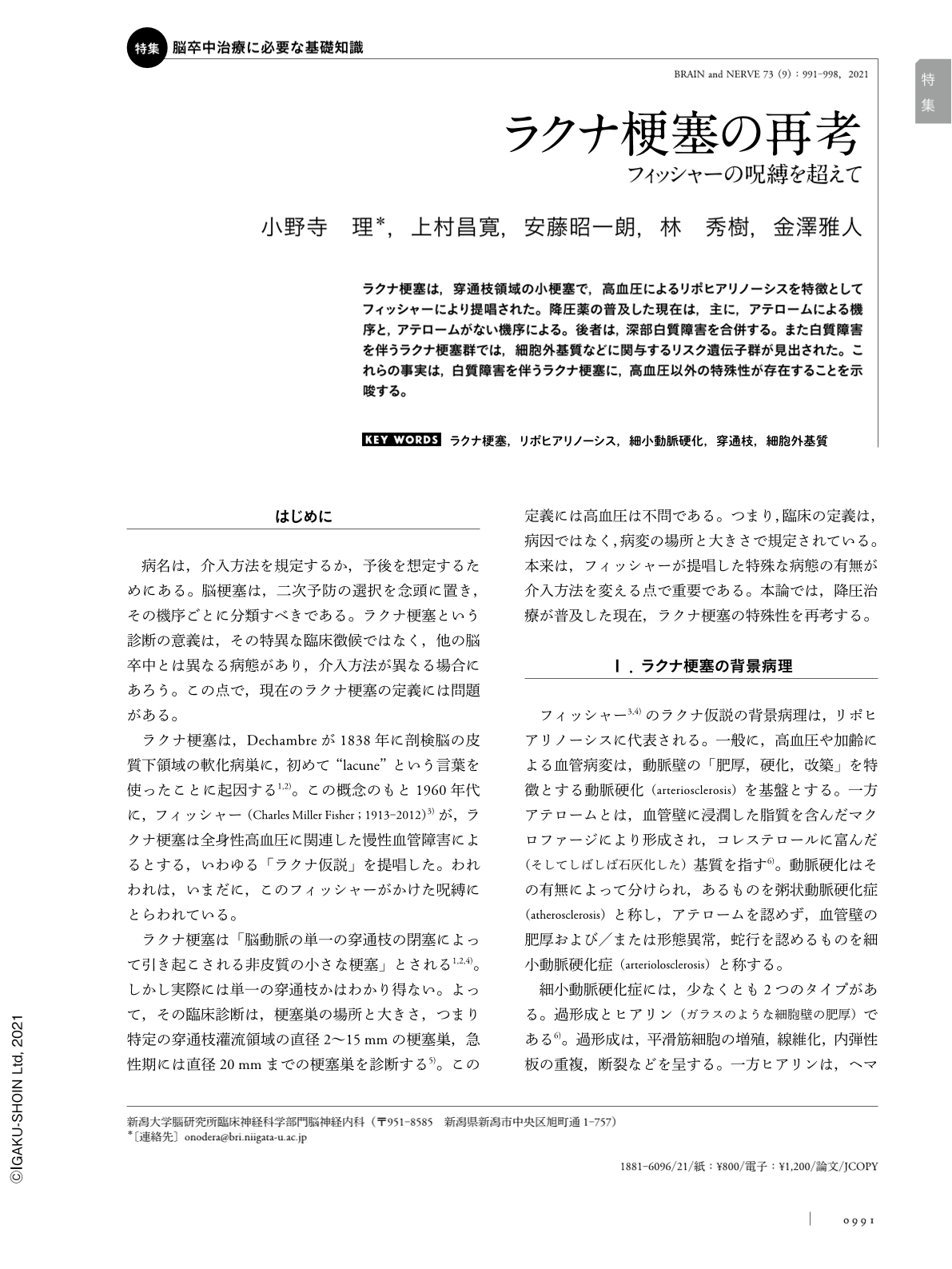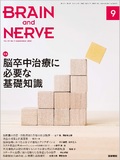Japanese
English
- 有料閲覧
- Abstract 文献概要
- 1ページ目 Look Inside
- 参考文献 Reference
ラクナ梗塞は,穿通枝領域の小梗塞で,高血圧によるリポヒアリノーシスを特徴としてフィッシャーにより提唱された。降圧薬の普及した現在は,主に,アテロームによる機序と,アテロームがない機序による。後者は,深部白質障害を合併する。また白質障害を伴うラクナ梗塞群では,細胞外基質などに関与するリスク遺伝子群が見出された。これらの事実は,白質障害を伴うラクナ梗塞に,高血圧以外の特殊性が存在することを示唆する。
Abstract
Lipohyalinosis is an important concept in the independence of lacunar stroke; however, its role has been overemphasized and has led to much confusion in the understanding of lacunar stroke. Classical lipohyalinosis has declined following the widespread availability of antihypertensive therapy, and lacunar stroke secondary to age-related hyaline atherosclerosis is more commonly observed in clinical practice. Clinically diagnosed lacunar stroke is associated with several etiopathogenetic contributors. Excluding cardiogenic embolism, lacunar stroke can be categorized based on the detection of an atheroma. Atheroma imaging is possible in recent years, and strokes that are not associated with an atheroma are shown to present with deep white matter hyperintensity on MRI. Additionally, risk gene analysis has confirmed a group of risk genes associated with the extracellular matrix in lacunar stroke with white matter hyperintensity on MRI. These findings suggest the role of a variety of etiopathogenetic mechanisms underlying lacunar stroke and that lacunar stroke with deep white matter hyperintensity on MRI may be attributable to unique pathogenetic contributors. This group is known to be strongly associated with genetic contributors. Hopefully, lacunar stroke will be diagnosed from this perspective with the development of interventional strategies tailored to the pathogenesis of this condition.

Copyright © 2021, Igaku-Shoin Ltd. All rights reserved.


